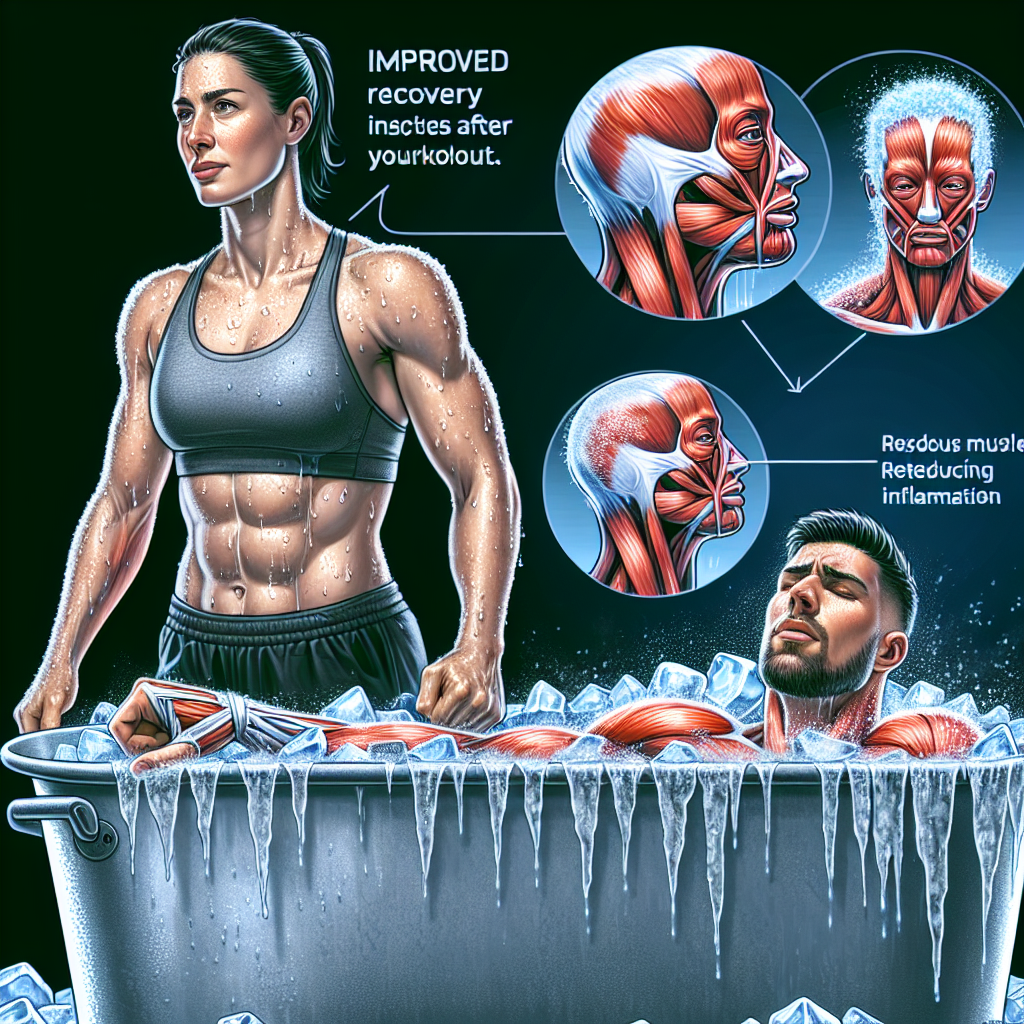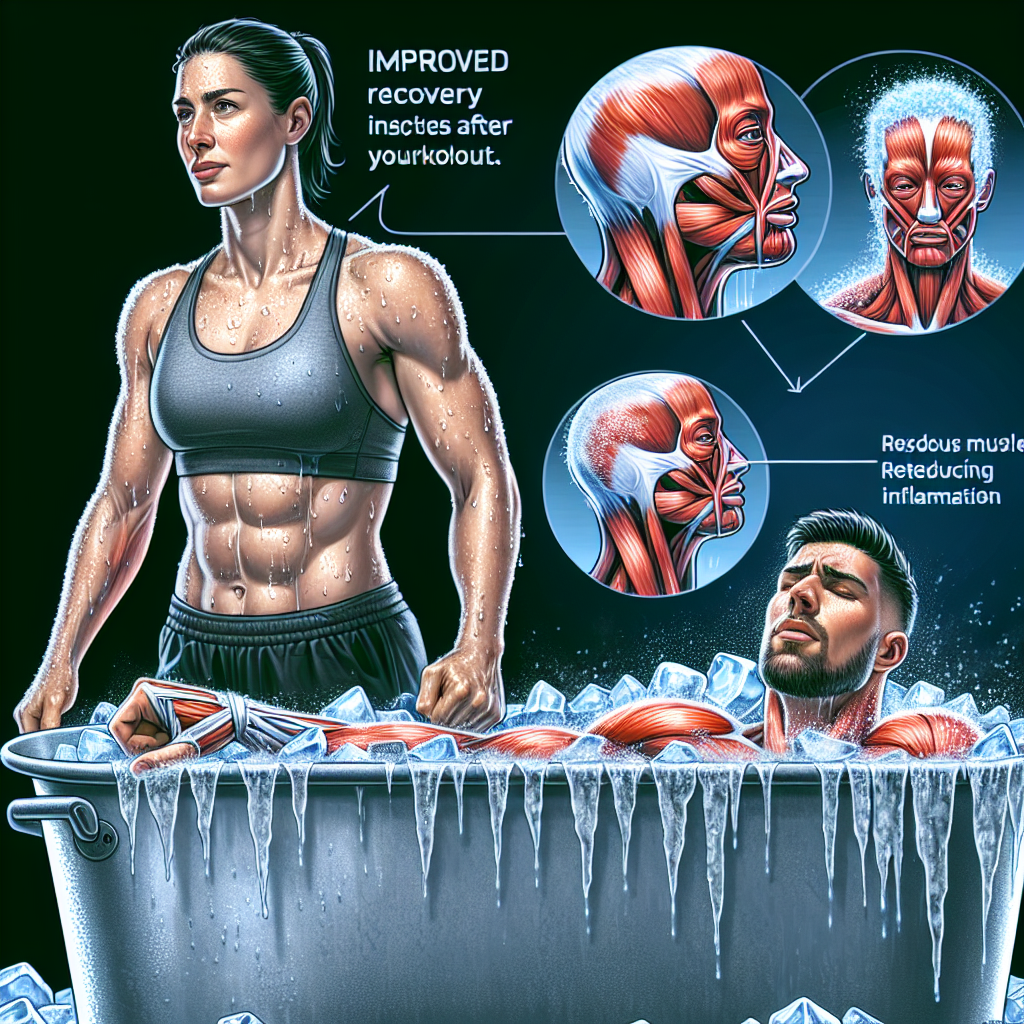You might’ve heard athletes swear by the rejuvenating power of ice baths after an intense workout. “Understanding the Science Behind Ice Baths” is an informative guide designed to put a spotlight on this fascinating topic. Through accurate scientific research, you’ll understand the underlying mechanisms of how reducing your body temperature can indeed boost your athletic performance and overall recovery. Get ready to discover the cold, hard facts as you step into the world of ice baths.

History of Ice Baths
Throughout the history of humanity, ice baths, also known as cold therapy or cryotherapy, have been a popular method for promoting health and wellness, accelerating muscle recovery, boosting the immune system, and enhancing one’s mental well-being.
Ancient civilizations and ice baths
Ice baths can be traced back to the Ancient Egyptians who used cold water to treat various illnesses, as well as to the ancient Greeks and Romans who regarded ice baths as an essential part of their hygiene and health rituals. The Spartans famously subjected themselves to cold water baths believing that indulging in hot waters was for the weak and effeminate. In India, yogis have been practicing cold water treatments for thousands of years, a tradition that is rooted in their belief that it strengthens their willpower and spirit.
Ice baths in modern healthcare
Today, ice baths have gained significant traction, especially in the realm of modern sports medicine. Many renowned athletes rely on this age-old practice to help accelerate the muscle repair process after strenuous exercise, reduce inflammation, and improve their overall performance. Moreover, ice baths aren’t solely restricted to the athletic world. They are also being incorporated into various healthcare practices to help in pain management and to improve mental health.
Scientific Explanation of Ice Baths
To understand the efficacy of ice baths, it’s crucial to delve into the scientific explanation of what happens to your body when you immerse yourself in icy waters.
The effect of cold temperature on the body
Exposure to cold temperatures stimulates the body’s adaptive defense mechanisms. When your body senses the cold, it reacts by constricting the bloodstream to retain heat, a process known as vasoconstriction. This forces your body to increase its metabolic rate to generate more heat, thus providing a natural “workout” for your body even while it is at rest.
Physiological changes in ice bath immersion
When you immerse in an ice bath, your body goes through a series of physiological changes. These include significant shifts in heart and breathing rates, increased blood pressure, and altered blood flow patterns. Additionally, the shock to your system pushes your body into survival mode, leading to a release of adrenaline which can have long-lasting invigorating effects.
Ice Baths and Muscle Recovery
Ice baths have been associated with a myriad of benefits for muscle recovery, especially in terms of reducing muscle soreness after intense exercise.
Constriction of blood vessels
When you immerse your body in an ice bath, the cold water causes your blood vessels to constrict. This constriction helps to reduce swelling and inflammation, which are the primary causes of muscle pain and discomfort following strenuous physical activity.
Reduction of metabolic activity and tissue breakdown
Cold temperature exposure slows down the metabolic activity of your cells and tissues, which helps to reduce tissue breakdown. It also dilates your blood vessels, promoting blood flow which gradually aids in the healing and recovery of damaged tissues.
Flushing out waste products from tissues
As your blood vessels dilate after an ice bath, it helps to boost the circulation of blood within your body. This blood helps to carry waste products away from your tissues, facilitating the process of recovery.

Ice Baths and the Central Nervous System
The benefits of ice baths extend beyond muscle recovery and overall physical wellness. They also play a crucial role in stimulating and toning your central nervous system (CNS).
Effect of cold temperature on nerve impulses
Cold water immersion has been found to slow nerve conduction, thereby decreasing the nerve’s ability to transmit pain signals to your brain. This numbing effect is one of the reasons why ice baths are considered an effective treatment option for pain and inflammation.
Sensory response to immersion in cold water
Exposing your body to the shock of cold water leads to a kind of ‘reset’ of your sensory nerves. It’s an intense experience that requires you to overcome the natural instinct to escape from discomfort. Over time, as you learn to tolerate or even embrace the cold, you develop mental resilience and discipline.
Mental resilience and discipline build-up
Regular exposure to cold water can train your brain to tolerate stressful situations better, making you more resilient. It also demands a level of discipline, as immersing yourself in freezing water is a conscious decision that isn’t easily made. This discipline can then be carried over into other areas of your life, significantly improving your mental strength.
Neurochemical Changes During Ice Baths
When you immerse your body in an ice bath, it also triggers a neurochemical response.
Release of endorphins
Coping with the initial shock of the cold prompts your body to release endorphins or ‘pain-killing’ hormones into your bloodstream, which can lead to feelings of euphoria and positivity.
Decreased inflammation and pain
Cold therapy has long been established as an effective tool for reducing inflammation and pain. The release of endorphins combined with the numbing effect of the cold on your nerve endings can provide substantial pain relief.
Stress response and cold shock proteins release
Ice baths can induce the release of cold shock proteins that have stress-protective effects on your body. These proteins can help heal, rejuvenate and strengthen your cells, contributing to better overall health.
Ice Baths and Immune System
Another significant aspect of ice baths is their ability to stimulate the immune system.
Boosting immune response
Exposure to cold stress is believed to boost the immune response. This is primarily attributed to the increased metabolic rate which occurs as your body tries to generate heat to combat the cold, leading to an enhanced immune system.
Increasing circulation and white blood cell production
The increased blood circulation post ice bath is not only beneficial for muscle recovery but also helps boost the production of white blood cells in your body. These cells play a significant role in defending your body against diseases and infections, thus fortifying your overall immunity.
Ice Baths and Mental Health
The benefits of ice baths extend into the realm of mental health, offering relief from anxiety and depression, and aiding in mental endurance.
Mental endurance
Regularly exposing oneself to the shock and discomfort of the cold builds mental endurance. You learn to acknowledge the discomfort, yet choose to stay in the cold, a practice that enhances mental strength and cultivates resilience.
Decreasing symptoms of depression and anxiety
There’s a growing body of evidence to suggest that cold therapy could have positive effects on mental health. The release of endorphins, the cold’s numbing effect, and the feeling of mental clarity after an ice bath session, all seem to help in alleviating symptoms of depression and anxiety.
Health Risks of Ice Baths
While ice baths have numerous potential benefits, it’s essential to be mindful of their potential risks.
Potential cardiovascular issues
Cold water immersion can exert significant stress on the cardiovascular system, which can be harmful, particularly for those with existing heart issues or high blood pressure. It’s advisable to always consult with a healthcare professional before beginning regular ice baths, especially if you have underlying health conditions.
Risk for hypothermia
Excessive exposure to cold water can also lead to hypothermia, a potentially life-threatening condition wherein your body’s temperature drops below a safe level. It’s crucial to control the duration of your ice baths and to know when to exit the bath to avoid this risk.
Safety precautions to take before using ice baths
Before jumping into an ice bath, it’s essential to learn what’s safe for you. This involves testing your body’s response to cold, limiting your time in the bath, and always having supervision during your baths. Remember, safety should always come first.
Modern Ice Bath Practices and Techniques
Over time, the practice of taking ice baths has evolved, with modern techniques focusing on optimizing its benefits while reducing associated risk.
How long to soak in an ice bath
The duration of ice baths can vary depending on individual preferences and tolerance to cold. However, it is generally advised to immerse in an ice bath for a duration of 10-15 minutes to reap the benefits without overexposing oneself to the cold.
Temperature for an ice bath
The temperature for an ice bath typically ranges from 50 to 59 degrees Fahrenheit (10 to 15 degrees Celsius). It’s essential to make sure the temperature isn’t excessively cold to avoid risks like hypothermia.
Alternatives to ice baths in modern sports science
In recent years, other cryotherapy methods have been developed as alternatives to ice baths. This includes whole-body cryotherapy (WBC), which exposes the body to extremely low temperatures (-200°F to -300°F) for a short duration. It’s also common now to use localized cryotherapy, where cold temperature is applied to specific areas of the body, rather than the whole body immersion practiced in ice baths.
Critiques and Controversies Around Ice Baths
Despite their popularity and potential benefits, ice baths have faced their share of controversy and critique.
Contradictory research findings
While several studies vindicate the use of ice baths in aiding muscle recovery and wellness, there is also research that disputes these findings, claiming little to no beneficial effects of ice baths. These contradictory results have led to ongoing debates on the efficacy of ice baths.
Professional athletes and their diverse stances on ice baths
Ice baths are popular among many professional athletes, but not all sing its praises. Some athletes abstain from ice baths due to discomfort, hypothermia risk, and because they believe other recovery methods to be more effective. Their diverse opinions highlight that while ice baths may work for some, they may not be the best choice for everyone.
Future research outlook and need for more investigation
Given the differing opinions and contradictory research findings, there’s a clear need for more in-depth, rigorous investigation into the benefits and risks of ice baths. Future research should also aim to develop guidelines for safe and effective cold therapy practices, particularly for people with existing health conditions. Even as ice baths continue to be used across athletic and healthcare fields, it’s essential to strive for a more scientific understanding of their impacts – both positive and negative.
